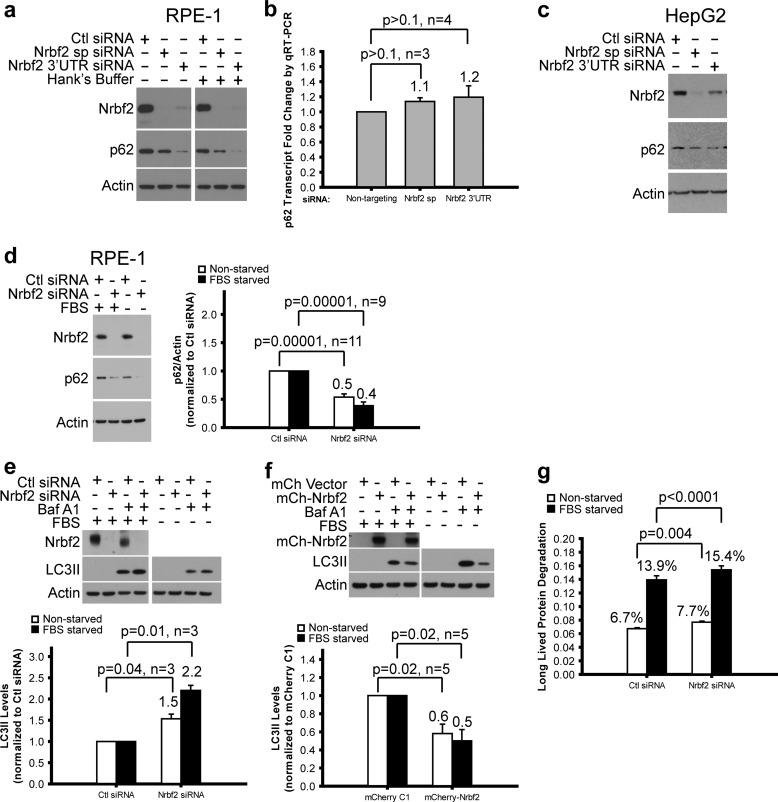FIGURE 2.
Characterization of Nrbf2 as a negative regulator of autophagic flux under both nutrient-rich and starvation conditions in human cell lines. Western blot analysis of p62 in RPE-1 (a) and HepG2 (c) cells transfected with non-targeting control (Ctl) siRNA, human SMARTpool (sp) and 3′UTR Nrbf2 siRNAs showed decreased p62 levels upon Nrbf2 siRNA treatment. a, cells were grown under nutrient-rich or 1-h Hanks' buffer starvation conditions. c, cells were grown under nutrient-rich conditions. b, qRT-PCR quantification of the relative p62 transcript levels in the RPE-1 cells transfected with Ctl, Nrbf2 sp, and Nrbf2 3′UTR siRNAs. d, Western blot analysis of p62 levels in RPE-1 cells transfected with Ctl or Nrbf2 sp siRNA showed decreased p62 levels upon Nrbf2 siRNA treatment under both nutrient-rich and 18-h serum starvation conditions. e, Western blot analysis of LC3II levels in RPE-1 cells transfected with Ctl siRNA or Nrbf2 sp siRNA and treated either without or with 200 nm Baf showed a greater Baf-induced increase of LC3II levels upon Nrbf2 siRNA treatment under both nutrient-rich and 18-h serum starvation conditions. f, Western blot analysis of LC3II levels in RPE-1 cells transfected with mCherry empty vector or mCherry-tagged human Nrbf2 and treated either without or with 200 nm Baf showed a lesser Baf-induced increase of LC3II levels upon Nrbf2 overexpression under both nutrient-rich and 18-h serum starvation conditions. The statistical significance for the LC3II assays in e and f is lower than that for the p62 assay in d, likely because of fewer numbers of independent experiments. g, the long-lived protein degradation rate increased upon Nrbf2 siRNA treatment under both nutrient-rich and serum starvation conditions. For all quantifications, means ± S.E. were plotted with means labeled.

